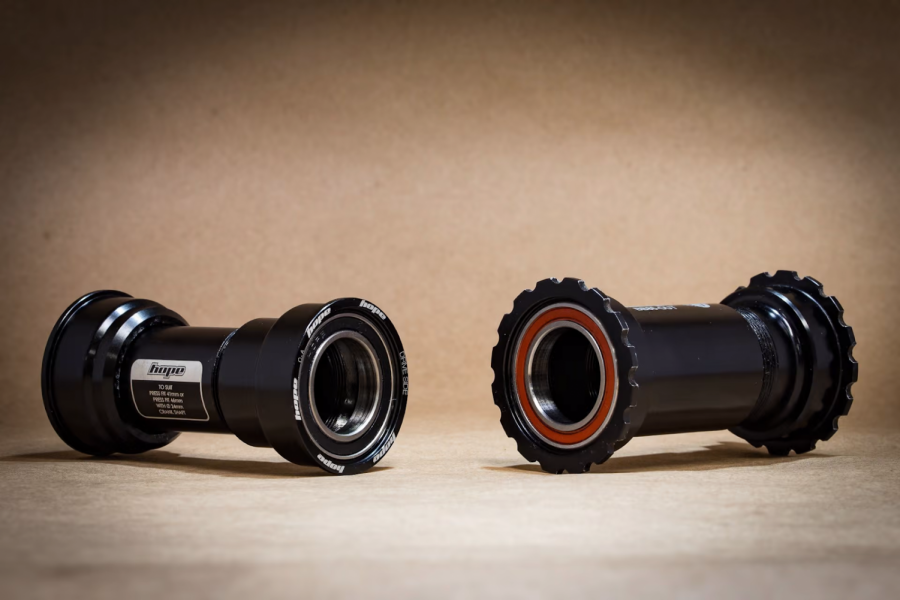Press Fit vs.Threaded – Cycling’s Current Biggest Debate
Image Courtesy of: https://www.google.com/search?q=pressfit+vs+threaded&tbm=isch&ved=2ahUKEwiJ_4eq5N3uAhVDIt8KHZUkC4sQ2-cCegQIABAA&oq=pressfit+vs+threaded&gs_lcp=CgNpbWcQAzICCAAyAggAMgQIABAYMgQIABAYOgQIIxAnOgQIABBDOggIABCxAxCDAToFCAAQsQM6BggAEAoQGFDSSliWYGDgYGgAcAB4AIABR4gB0AmSAQIyMJgBAKABAaoBC2d3cy13aXotaW1nwAEB&sclient=img&ei=kgMjYInuHcPE_AaVyazYCA&bih=937&biw=1920&rlz=1C1UEAD_enUS933US933#imgrc=ubOFKhWaTSplKM
February 12, 2021
It is a common occurrence for the cycling community to undergo polarizing debates regarding opinions on new cycling engineering. The most notable one has been the debate between rim brakes and hydraulic disc brakes, with staunch supporters of rim brakes and just as many supporters of disc brakes incessantly presenting their arguments to one another in person, on public forums, and even through harshly worded emails to the manufacturing companies themselves. As to why this happens, it can be inferred that cycling companies will only produce frames that support the most popular technology, and so people on either side of a debate will want to attract as many people as possible to their side, and, in turn, companies will produce frames with technology that is the most popular. The most recent example of this has been bottom brackets, which is the part of the bike that allows the crank to attach to the frame and support the very motion of pedaling. Like every component in the industry, bottom brackets have evolved and adapted greatly since the beginning of their existence, and the biggest change they have undergone is the way they fit into the frame itself. The first bottom brackets had a threaded fit system, in which they would mount to the frame through threads that the frame manufacturers had already put into position. For the vast majority of time, this was the only system used, and it was highly regarded for its simplicity and consistency.
In the early 2000s, a new and more innovative design for bottom bracket integration was presented, which is the pressfit bottom bracket. The pressfit bottom bracket does not use a thread to fit, rather it uses a precise circumference to forcefully fit into the frame, and uses the advantage of pressure to keep it in place. This was designed to increase stiffness in the bicycle frame, and it was certainly successful in doing so. Stiffness makes a bicycle feel more responsive, snappy, and faster, and so any cyclist who spends vast amounts of time in the saddle appreciates a bicycle that is as stiff as possible. The very reason carbon fiber frames erupted in popularity was because of the stiff ride they provide. The stiffness was created because a press fit bottom bracket allowed for the two chainstays to be wider from one another at the point of meeting the bottom of the seat tube, and because the chainstays would no longer have to provide any structural support to threads from a threaded bottom bracket, they could be engineered to be wide from one another.
In the initial years following this design, press fit bottom brackets were widely used, but their undeniable glory was soon questioned. It was a common occurrence for press fit bottom brackets to start creaking after a few thousand miles were put on the bike, and this irritating noise started to cause many concerns among the cycling community. From there, many started requesting that frame manufacturers return to threaded bottom bracket compatible frames to save cyclists from this trouble. Instead of throwing away decades of engineering studies based on bikes with press fit bottom brackets, bicycle manufacturers and bottom bracket producers started to point fingers at one another in hopes to rectify the press fit bottom bracket crisis, instead of completely abandoning the technology altogether. Component manufacturers blamed frame manufactures on making openings for the bottom brackets that were not perfectly cylindrical, and frame manufactures blamed parts manufacturers for providing inaccurate measurements and compatibility ranges with their bottom brackets. The most likely fault lies on both parties, who did not adapt their bottom bracket designs to updated frame technologies, causing imperfect fits of bottom brackets that led to creaking.
It does seem that the days of press fit bottom brackets are over, however. This past summer, Specialized launched the largest bike marketing mission in the history of cycling, with the Specialized Tarmac. Influencers from all over the world posted about how great this bike was, and its presence was undeniable. A large “feature” of this bike that was noted was the return to a threaded bottom bracket, which Specialized advertised as “reliable,” while paying seemingly no attention to its mechanical merit. Just a few weeks later, Trek released their Emonda frame for 2021 which also had a threaded bottom bracket. Since two of the biggest companies in the industry have already switched back to threaded, it is likely that the rest of the industry will follow.

